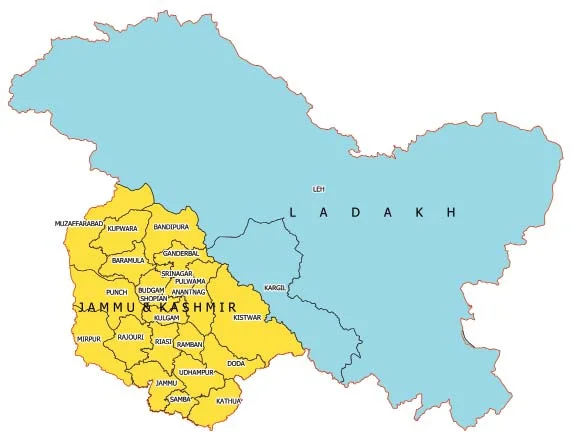![]() 27 Jul 2024
27 Jul 2024
Despite having special status under Article 370 of the Indian Constitution Jammu & Kashmir (J & k) experienced violence, cross-border terrorism and political instability with internal and external ramifications. It resulted in the loss of many lives including that of innocent civilians, security personnel, militants and large-scale displacement of Kashmiri Pandits from the Kashmir valley.
The Jammu region: It is a mix of foothills and plains, predominantly inhabited by the Hindus.

However, as Pakistan continued to control a sizable part of the state, issue was taken to the UN Organisation, which in its resolution dated 21 April 1948 recommended a three-step process to resolve the issue.
External: Pakistan’s claim to Kashmir Valley: Pakistan has always claimed Kashmir Valley should be part of Pakistan and a part of the State came under Pakistani control after the tribal invasion of 1947.
Conflict between State and Central government
Alliance Victory: In the 1987 assembly election the alliance of National Conference— Congress showed a massive victory and Farooq Abdullah returned as Chief Minister.
Militancy and the Grip of Violence (1989) in Kasmir: By 1989, State had come into grip of a militant movement mobilised around the cause of a separate Kashmiri nation and Pakistan provided moral, material and military support to insurgents.
Leadership Changes from Mufti Mohammed to Ghulam Nabi Azad (2002-2008): Mufti Mohammed of PDP headed government for first three years succeeded by Ghulam Nabi Azad of the INC who however could not complete the term as president rule was imposed in state in July 2008.
| Must Read | |
| Current Affairs | Editorial Analysis |
| Upsc Notes | Upsc Blogs |
| NCERT Notes | Free Main Answer Writing |
The intricate past of Jammu and Kashmir, marked by partition disputes, internal unrest, and external conflicts, has resulted in long-lasting instability and violence. The region’s distinct position under Article 370, which was intended to grant autonomy, led to disputes and ultimately ended with its repeal in 2019. This action was intended to completely incorporate Jammu and Kashmir into India, but the area still struggles with its social and political obstacles and desire for self-governance.
| Related Articles | |
| ARTICLE 370 OF INDIAN CONSTITUTION | On Jammu and Kashmir and Statehood |
| FEATURES OF INDIAN CONSTITUTION | East-West Division of Himalayas: From Kashmir to the Eastern Hills |
<div class="new-fform">
</div>
